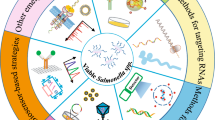Abstract
This study was aimed at developing an easy to use and inexpensive biosensor for the detection of typhoidal Salmonella. The technique was designed to be used without expensive instrumentation if necessary. Bacteriophages specifically infecting three typhoidal Salmonella serovars were isolated and purified. Log-phase cultures were mixed with a high titre of a single phage (109 PFUs) in separate wells of a microtitre plate and incubated at room temperature (30 °C) for 1 h. After incubation, resazurin was added and the plates were incubated further for 1 h. Absorbance at 570 nm of each test well was measured using a commercial microplate reader and compared with that of the control well. A significant difference (p < 0.05) between the absorbance of test and control wells indicated the presence of target bacteria. With visual inspection, a delay in colour change from blue to pink was considered a positive result. The system could detect 5 × 104 CFUs in 120 min without pre-enrichment and 10 CFUs with a pre-enrichment of 6 h.





Similar content being viewed by others
References
Ackermann H-W (2009a) Basic phage electron microscopy. Methods Mol Biol 501:113–126
Ackermann H-W (2009b) Phage Classification and Characterization. Methods Mol Biol 501:127–140
Ackermann H-W, Tremblay D, Moineau S (2004) Long-term bacteriophage preservation. WFCC Newslett 38:35–40
Adriaenssens E, Brister JR (2017) How to name and classify your phage: an informal guide. Viruses 9:70
De Lappe N, Doran G, O’Connor J, O’Hare C, Cormican M (2009) Characterization of bacteriophages used in the Salmonella enterica serovar Enteritidis phage-typing scheme. J Med Microbiol 58:86–93
Feasey NA, Dougan G, Kingsley RA, Heyderman RS, Gordon MA (2012) Invasive non-typhoidal salmonella disease: an emerging and neglected tropical disease in Africa. Lancet (Lond Engl) 379:2489–2499
GBD 2015 Disease and Injury Incidence and Prevalence Collaborators (2016) Global, regional, and national incidence, prevalence, and years lived with disability for 310 diseases and injuries, 1990–2015: a systematic analysis for the Global Burden of Disease Study 2015. Lancet 388:1545–1602
Karpe YA, Kanade GD, Pingale KD, Arankalle VA, Banerjee K (2016) Genomic characterization of Salmonella bacteriophages isolated from India. Virus Genes 52:117–126
Kutter E (2009) Phage host range and efficiency of plating. Methods Mol Biol 501:141–149
Le Mercier, P. (2010). Double strand DNA viruses. Retrieved October 24, 2017 from https://viralzone.expasy.org/236.
Lingohr E, Frost S, Johnson RP (2009) Determination of bacteriophage genome size by pulsed-field gel electrophoresis. Methods Mol Biol 502:19–25
Loc-Carrillo C, Abedon ST (2011) Pros and cons of phage therapy. Bacteriophage 1:111–114
Morpeth SC, Ramadhani HO, Crump JA (2009) Invasive non-Typhi Salmonella disease in Africa. Clin Infect Dis 49:606–611
Olopoenia LA, King AL (2000) Widal agglutination test—100 years later: still plagued by controversy. Postgrad Med J 76:80–84
Riss TL, et al. (2013) Cell Viability Assays. In: Sittampalam GS, Coussens NP, Brimacombe K, et al. (eds) Assay guidance manual [Internet]. Eli Lilly and Company and the National Center for Advancing Translational Sciences, Bethesda
Roda A, Michelini E, Zangheri M, Di Fusco M, Calabria D, Simoni P (2016) Smartphone-based biosensors: a critical review and perspectives. Trends Anal Chem 79:317–325
Sherwal B, Dhamija R, Randhawa V, Jais M, Kaintura A, Kumar M (2004) A comparative study of typhidot and widal test in patients of typhoid fever. JIACM 5:244–246
Su X-L, Li Y (2005) A QCM immunosensor for Salmonella detection with simultaneous measurements of resonant frequency and motional resistance. Biosens Bioelectron 21:840–848
Swanstrom M, Adams MH (1951) Agar layer method for production of high titer phage stocks. Exp Biol Med 78:372–375
Tey BT, Ooi ST, Yong KC, Ng MYT, Ling TC, Tan WS (2009) Production of fusion m13 phage bearing the di-sulphide constrained peptide sequence (C-WSFFSNI-C) that interacts with hepatitis B core antigen. Afr J Biotechnol 8:268–273
Turner APF (2013) Biosensors: sense and sensibility. Chem Soc Rev 42:3184–3196
Van Twest R, Kropinski AM (2009) Bacteriophage enrichment from water and soil. Bacteriophages Methods Mol Biol 501:15–21
Wain J, Hendriksen RS, Mikoleit ML, Keddy KH, Ochiai RL (2015) Typhoid fever. Lancet (Lond Engl) 385:1136–1145
Wang Y, Wang Y, Ma A, Li D, Ye C (2014) Rapid and sensitive detection of Listeria monocytogenes by cross-priming amplification of lmo0733 gene. FEMS Microbiol Lett 361(1):43–51
WHO (2014) Immunization, vaccines and biologicals. Typhoid. Retrieved January 15, 2018 from https://www.who.int/immunization/diseases/typhoid/en/.
Wong YY, Ng SP, Ng MH, Si SH, Yao SZ, Fung YS (2002) Immunosensor for the differentiation and detection of Salmonella species based on a quartz crystal microbalance. Biosens Bioelectron 17:676–684
Zhang D, Yan Y, Li Q, Yu T, Cheng W, Wang L, Ju H, Ding S (2012) Label-free and high-sensitive detection of Salmonella using a surface plasmon resonance DNA-based biosensor. J Biotechnol 160:123–128
Zhao X et al (2010) Development and application of a rapid and simple loop-mediated isothermal amplification method for food-borne Salmonella detection. Food Sci Biotechnol 19(6):1655–1659
Acknowledgements
The authors thank the University Grants Commission, Government of India, for providing financial support during this study.
Author information
Authors and Affiliations
Corresponding author
Ethics declarations
Conflicts of interest
The authors declare that they have no conflicts of interest to disclose.
Electronic supplementary material
Below is the link to the electronic supplementary material.
Rights and permissions
About this article
Cite this article
Vaidya, A., Ravindranath, S. & Annapure, U.S. Detection and differential identification of typhoidal Salmonella using bacteriophages and resazurin. 3 Biotech 10, 196 (2020). https://doi.org/10.1007/s13205-020-02187-4
Received:
Accepted:
Published:
DOI: https://doi.org/10.1007/s13205-020-02187-4




